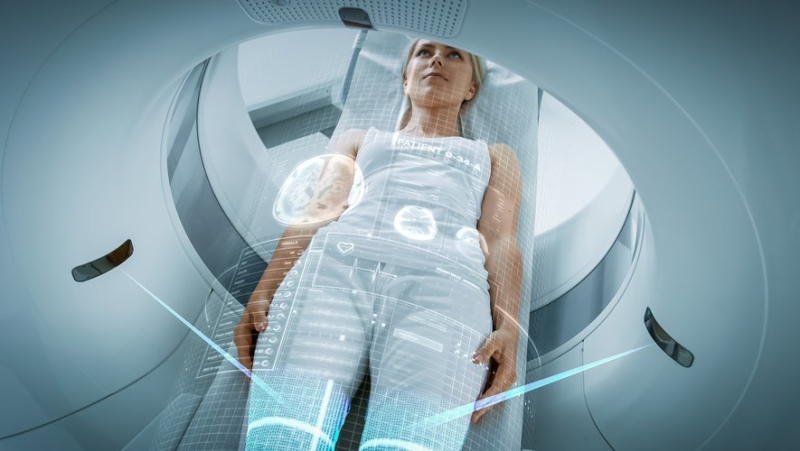Pink October: Breast cancer diagnosis and treatment optimized thanks to artificial intelligence

Ces algorithmes servent à mieux comprendre les tumeurs (illustration).
October is dedicated to breast cancer. Artificial intelligence (AI) is transforming medical imaging with faster and more reliable tools. These advances are helping oncologists and radiologists better screen, diagnose, prescribe personalized treatments, and monitor women in remission from breast cancer.
For Dr. Irène Buvat, Director of the Translational Imaging in Oncology Laboratory (Inserm/Institut Curie), AI is already improving breast cancer imaging. And the progress will not stop there!
Breast cancer, with more than 60,000 new cases per year in France, is the main female cancer, still responsible for approximately 12,000 deaths per year. “Radiology images, nuclear medicine, digital pathology and multi-omic data (genomics, transcriptomics, metabolomics) enable the creation of models based on artificial intelligence tools. Thanks to the teams from the École des Mines de Paris and the Institut Curie, the Institut des Cancers des Femmes is positioning itself as a key player in France in the use of AI for oncology“, Professor Anne Vincent-Salomon, pathologist and director of the Institute, recently declared at a press conference.
Artificial intelligence improves image analysis
Artificial intelligence is already present in many imaging devices and will be even more so in the very near future. It has two major applications in medical imaging, including automating, making reliable and accelerating image analysis (MRI, mammograms, PET scans, etc.). This can be done in several ways, starting with “the use of AI algorithms that can automatically detect anomalies in the images obtained, explains Dr. Irène Buvat. This facilitates rapid sorting between normal images and pathological images that require urgent radiological expertise to determine if the patient has cancer“.
The use of AI algorithms also consists of automatically performing measurements on tumor images (volume or shape characterization). Currently, radiologists or nuclear medicine physicians perform these measurements manually, which takes time and sometimes practitioners do not agree. AI makes it possible to automate and accelerate these processes. “This reduces variability between medical centers and observers, adds the specialist. This is particularly useful in centers with limited resources and seeing few patients."
And even, in the near future, algorithms could generate an initial imaging report, facilitating the work of radiologists or nuclear physicians who will then only have to check and complete it. This automation process is underway and is gradually becoming widespread in French medical services.
AI makes images "talk"
The second area of progress using AI is to better exploit the information contained in images. “Currently, we mainly measure the volume, the largest dimension of tumors, as well as the signal level (contrast), which allows us to roughly characterize anomalies, explains Irène Buvat. However, AI algorithms offer the possibility of measuring a multitude of information, up to hundreds of indexes extracted from radiological images, called “radiomics“.”
But the challenge is not limited to simply measuring these indices. They still need to be used. And here again, the machine can do better than the human brain. Indeed, the latter has difficulty analyzing more than four parameters simultaneously. So what about twenty, or even several dozen! This is where AI algorithms come in. They can identify the best combinations of parameters, and thus be able, for example, to predict the response to treatment and how they influence the prognosis of patients, or even predict cardiotoxicities linked to breast irradiation. For more personalized treatment strategies for each patient.
In addition, these algorithms are used to better understand tumors, based for example on their molecular characteristics. The goal for researchers in the coming years is to identify tumor phenotypes (set of characteristics) from precise images, particularly in 3D (MRI, CT scan) that complement anatomopathological analyses (tissue analysis). And thus, as an example among others, to understand resistance to immunotherapy treatment.
For more information: The IHU Women's Cancer Institute is a project that brings together the Curie Institute, the University of Paris Sciences et Lettres and Inserm, for comprehensive care for women affected by breast and gynecological cancers.




